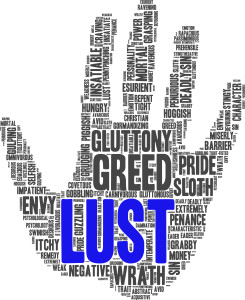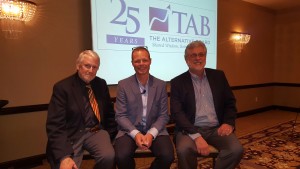Last week we described the Seven Deadly Sins of an Entrepreneur. This week, we’ll delve into the first Operational Sin; Lust.
The Operational Sins reduce your personal effectiveness as a business owner. They prevent you from being as operationally effective, on a day-to-day basis, as you could or should be. If you aren’t efficient in your leadership role, it cascades down through your whole organization.
 Lust is the sin that springs from a lack of self-control. As an owner, few people in your business (if any at all) say no to you. They ask, “Boss, did you do that really important thing you were supposed to do yesterday?” You respond, “No, because something more important came up.”
Lust is the sin that springs from a lack of self-control. As an owner, few people in your business (if any at all) say no to you. They ask, “Boss, did you do that really important thing you were supposed to do yesterday?” You respond, “No, because something more important came up.”
What does your employee say? It’s probably something like “Oh…Okay. Please let me know when you get around to it, so I can move forward on my job.” They don’t take you to task, so if you don’t manage yourself they just have to live with it.
Lust is defined as a passionate desire, an overwhelming enthusiasm. If we don’t have it, we can’t inspire others to accomplish great things. So what are signs that your Lust has gotten out of control?
Projects never get finished. Long-time customers “disappear” because you had other things on your radar. You get nasty surprises from your financials or operating results because you were paying attention to something else. You find yourself telling employees, “I’m the owner. That doesn’t apply to me!”
Lust results in business planning driven by “Whim du Jour.” A customer requests a new product or service. Because you think you can sell something, you commit the company’s resources to creating it without considering the implications to other parts of the business. “Hey, it doesn’t look that difficult. Let’s do it!”
You can’t enunciate a clear-cut vision for yourself, and therefore for the business. “I just want to make a decent living,” or “I don’t want to work too hard,” are your only yardsticks for the future.
You trust to luck when trying new things. “Let’s just give it a try,” becomes “Why didn’t we see that coming?”
The business virtue that counters Lust is a Personal Vision. What do you want and expect from your company? You are in business for a reason; the company is supposed to provide you with certain things in life. Are you clear on what those are, and how you will get them?
Start with the material things that would indicate your success as an owner. It can be a simple list, such as:
- Work an average 35 hours a week
- Own a house at the lake worth $350,000
- Travel to Europe every two years
- Put my daughter through medical school
- Help lead a community agency dedicated to providing decent food for the poor
- Teach a high school class in entrepreneurship
Be specific. Your goals should be solid enough to allow measurement of your progress. Once you have it nailed down, your Personal Vision starts to become a vision for your business.
How much revenue is needed to generate your target income? How many employees will it take to accomplish that goal? What growth rate is needed to get there by your target date?
Write it down, with all the specifics. Every coach and motivational author says to WRITE IT DOWN! Keep it in front of you, and refer to it often. Then start paying close attention to your daily activities as an owner.
How much of your time is spent moving the company forward? How many distractions are really necessary? Could you be doing things to realize your vision if someone else did what you are doing this moment? Is the business moving in a direction that will fulfill your Personal Vision, or is it holding you back?
A strong, written Personal Vision will help you prioritize your activities, set natural limits on interruptions, and keep your eye on the ball.
Defeating Lust is the first step towards success. As Cheshire Cat famously said; “If you don’t know where you are going, any road will get you there.”
Thanks for reading Awake at 2 o’clock. Please share it with another business owner.

